How to Get Rid of Mice and Keep Them Away for Good

By Marilyn Syarto
As cute as mice can sometimes be (hence why some people keep them as pets), they can carry diseases into your home that are best left outdoors. They may transmit dangerous bacteria and disease through their feces or fleas and mites that hitch rides on their skin. Not only are humans at risk, but so are your pets, because mice can leave traces of bacteria in water and food bowls.
Our guide gives you the best tips on catching a mouse, disposing of a mouse, and making your home as mouse-proof as possible.
Photo via Watford's Nuisance Wildlife Trapping
To get rid of mice, you have to think like a mouse. These tiny critters can fit through cracks as small as a quarter of an inch, especially if their goal is to find food and comfort. A mouse also likes to scamper around the perimeter of a room and hide in corners and under furniture, so they can’t be spotted — the little guy is more afraid of you than you are of him. Another important thing to keep in mind: If you see one, there’s likely more of its friends and family hiding close by.
When Do Mice Come Into Your Home?
Mice can come into your home during all seasons of the year. Of course, they like your home because it’s an ample source of food, but they particularly like to make a warm and cozy nest in your home during the winter. They’ll look for soft fabrics, blankets, and even cardboard and soft plastics to gnaw and pick apart to make their nests. Also, to beat the heat, mice will look for cool spots in your home, such as basements, starting in the early summer. It’s best to stay prepared all year long with these methods to get rid of mice.
How to Get Rid of Mice Without Killing Them: Bucket Mouse Trap
If you want to get rid of mice but don’t have the stomach to catch one on a toxic glue trap or in a standard wooden mouse trap, this DIY bucket trap method is your best bet. You can release the mouse (or mice) that you catch, making it a more humane mouse trap.
Tools and Materials Needed:
- Five-gallon bucket
- Wood plank or long, thick branches for a ramp
- Soda can
- Drill
- Thin dowel (a metal clothes hanger is a good alternative)
- Peanut butter
- Wire snip (optional)
- Old towel
- Bleach
- Protective gloves
Step 1: Drill Bucket Holes
See if your bucket already has holes at the top that hold the handle. If so, remove the handle to expose the holes. If there are no holes on the top rim of your bucket, then drill a hole on one side of the rim, and another hole directly opposite on the rim.
Step 2: Prepare and Insert Dowel
Drill a hole on the bottom of an empty soda can. To make sure the dowel will sit evenly, it will help to drill a hole on the top of the empty soda can, too. Or, you can use the hole from the open pop-top. If you’re using a metal hanger for your dowel, straighten out the hanger as best as possible. Use a wire snip to clip off the ends of the hanger so you have a straightened piece of metal. Insert the dowel through the holes of the can. Insert the ends of the dowel into the holes of the rim on the bucket.
Step 3: Prepare Bait
Smear peanut butter around the can as bait.
Step 4: Place Trap
Put the pail where you suspect the mouse may be living.
Step 5: Place Ramp
Place the ramp material on the bucket. Make the edge of the ramp close enough for the mouse to climb onto the can. The mouse will lose its balance on the can and fall to the bottom of the bucket.
Step 6: Release Mouse
The mouse will be stunned and anxious but you still need to dispose of it correctly. Put on protective gloves. Calm down the mouse (and yourself!) by throwing an old towel on the top of the bucket. Bring the bucket at least 100 yards away (around a block) from your home and property where there are no other buildings around and release the mouse.
Step 7: Clean Bucket
If you plan on keeping the bucket, disassemble it and disinfect it with bleach.
How to Dispose of a Dead Mouse
If you found a dead mouse in your home or on your property, you will need to dispose of the carcass correctly. There’s a right way to do it so it doesn’t cause more problems: For instance, the smell of a dead mouse could attract unwanted insects or even other mice. A dead rodent can also still transmit diseases to humans, such as salmonella and hantavirus, which is a deadly infectious disease.
Tools and Materials Needed
- Protective gloves
- Eye protection/goggles
- Bleach and water solution or disinfectant
- Spray bottle
- Small shovel or disposable utensil
- Sealable plastic sandwich bags (or larger)
- Soap and water
Step 1: Disinfect
Put on protective gloves and eyewear. Spray the carcass and the surrounding area with bleach and water (50/50) or disinfectant spray.
Step 2: Move the Body
Use a shovel or utensil to scoop the body into a plastic bag and seal it up. Check if there are any mouse droppings nearby (tiny black or gray pellets the size of a grain of rice) and put those in the bag, as well. Important: Do not try to get the excess air out of the plastic bag or you may be releasing the body’s toxins into the air.
Step 3: Double Seal
Put the sealed plastic bag into another plastic bag and seal that up, too.
Step 4: Throw in Trash
Put the plastic bag in the trash outside (make sure you keep it separate from recycling).
Step 5: Dispose of Gloves
Dispose of the gloves in a plastic bag and put that bag in the trash.
Step 6: Wash Up
Thoroughly wash your hands with soap and water.
Pro Tip: If your cat suddenly drops a live mouse that it caught, there’s not a lot you can do unless you’re fast enough to throw a box over it and let it fester there for a few days. The quickest method is to let your cat continue to stalk and play with the mouse until it’s nearly or completely dead and then you will need to dispose of the mouse correctly.
How to Get Rid of Mice Smell
If you smell a deeply foul and sour odor, you may have a dead mouse decomposing somewhere in your walls. The pungent odor permeating through your home is a mixture of the mouse’s toxic gases. The smell will disperse after a few days. But if you want to get rid of the smell right away, do not spray air freshener; it will only make the odor worse. Instead, try pet odor enzymatic sprays around the spot where you smell it. You can also place charcoal briquettes around your home to absorb the odor or head to your local home improvement or hardware store for charcoal deodorizer bags to place around your home. Note: Putting bowls of baking soda and vinegar around your home may not be a strong enough method to get rid of the smell.
Photo via Staci Marie
How to Stop Mice From Entering Your Home
Sealing up teeny structural openings in your home is the best way to eliminate the threat of mice. You have more little entryways into your home than you think — there are many small structural openings you have for water, gas, electrical, and data lines. Mice can travel through these lines and into your walls. With a little observation and elbow grease, you can turn your home into a fortress against mice.
Here are a few spots where mice can hide or enter the home, and how to fix them.
Window Screens: Check and fix holes and tears in window screens, especially windows located on the ground floor or basement level.
Weatherstripping: Replace torn-up or worn-out weatherstripping around doors and windows.
Door and Window Frames: Re-caulk small gaps and cracks you find in thresholds like door frames and window sills. For larger gaps where a door threshold meets the frame, use a screwdriver or putty knife to shove steel wool into the spaces. Look for soapless steel wool in your home improvement or hardware store—mice can’t eat through this ideal barrier material. In a pinch, use steel wool with soap (though it may be messy).
Brush Overgrowth: Trim down or remove any brush that allows rodents to hide near your home. Try to keep a 5-foot barrier between your home and vegetation.
Grass: Trim and mow grass to keep it short, especially around the perimeter of your foundation.
Foundation: Look for cracks and gaps in the foundation and baseboard, both inside and out. Use steel wool, flashing, or hardware cloth to close up the spaces.
Dryer Vent: Patch up unused dryer vent holes. Observe your current dryer vent for any gaps—mice can sniff out the heat coming from the vent and they can climb in if they can reach it. Trim away all plantings or climbing ivy from the vent that mice can use to climb into the vent. Once they hop inside, they can chew away at the soft metal vent. To prevent this, cover the outside vent with a wire mesh cover (at home improvement or hardware stores). Warning: You will need to keep a daily watch for quick lint build-up in the dryer screen that will need to be cleaned out. This is important because this lint build-up is a fire hazard.
Debris: Check for any exposed materials that mice can chew or push through. For example, if you keep your paper goods in your garage, you may need to protect them in a durable plastic container. Rodents chew or push through these types of materials to enter a structure.
Pantry Food: Put grains, dry goods, pet food, and unsealed food in sealable metal containers.
Trash: Make sure your outdoor trash cans are sealed well and not exposed. Use bungee cords across the lids to keep them securely on the can. Clean your garbage cans frequently.
Scatter Scents Mice Hate
Tips and Hacks for Difficult Cases
You don’t always have to use toxic chemicals to get rid of a mouse. But if you still hear scratching in the walls and see mice droppings, it may be time to use a method that helps get rid of the rodents, and you won’t even see them leave or die. The use of d-Con, which is a bait station with poison that the mouse will eat, will effortlessly and effectively get rid of a stubborn mouse. The mouse will not die in the bait station, but it will nibble the poison and wander off to find water to quench its thirst. You can only use the bait station indoors, and since it’s dangerous around pets and small children, you will need to put the bait station in hard-to-access areas, and it’s not refillable. If this last-ditch method doesn’t work, it’s time to call in a pest control company.
Have you solved a mice problem before? Tell us about it in the comments below!
Enjoyed the project?
Comments
Join the conversation
-
 Tammy
on Apr 09, 2023
Tammy
on Apr 09, 2023
I live in the country and it is just part of country life to have mice getting in your garage, shop, garden. However I had to draw the line when they started getting in my TRUCK! That was a declaration of war.
I found the ultimate war machine, an Ozone Generator. It basically gases them. Plus it removes all odors. It make the area (garage) temporarily unlivable.
I use it everyday and I no long have mice in the garage.
In addition to all the great advice that actual works, I also added rubber life like snakes and life like owls and hawks that I move daily in the garden.
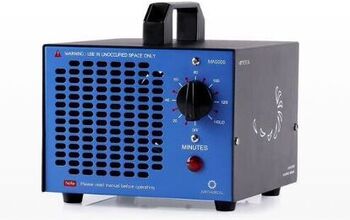
-
-
 Susan Milton Burgess
on Oct 02, 2024
Susan Milton Burgess
on Oct 02, 2024
Having a home built in 1865 we have a rock foundation have fun finding the mice entrance fill in holes outside and they reroute their tunnels yes we have had lots of trouble with mice and this year it has been rats too just can't get rid of them put out snap traps and d-con and a bucket have caught many and have found a couple of dead rats but I am getting really tired of this
-



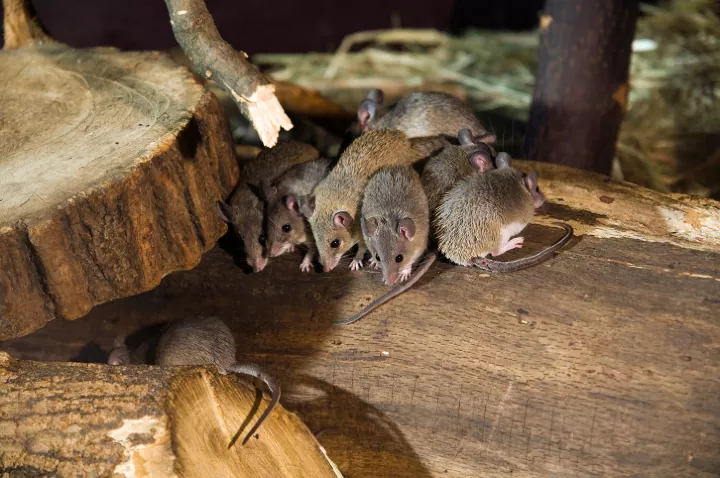

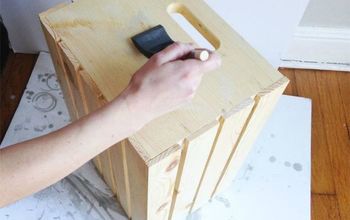
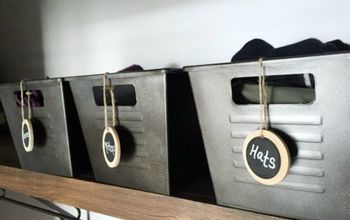


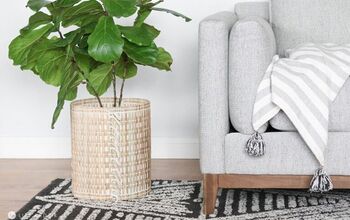
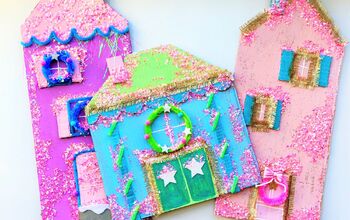


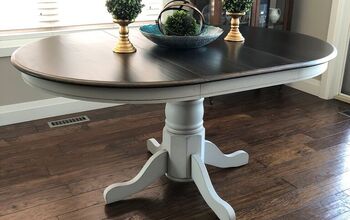

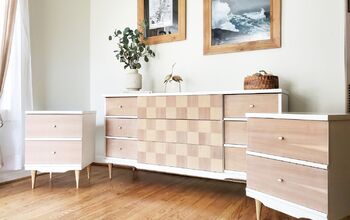

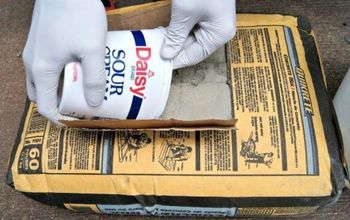
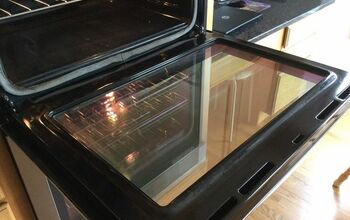

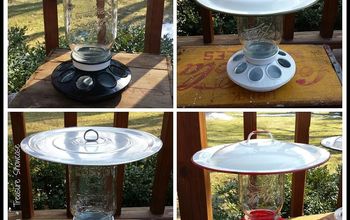

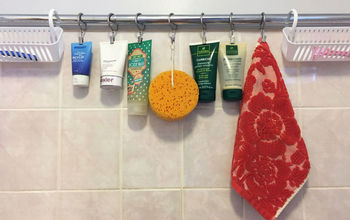
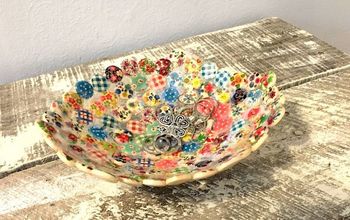
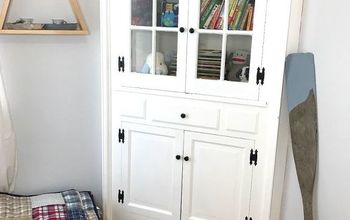
Frequently asked questions
Have a question about this project?